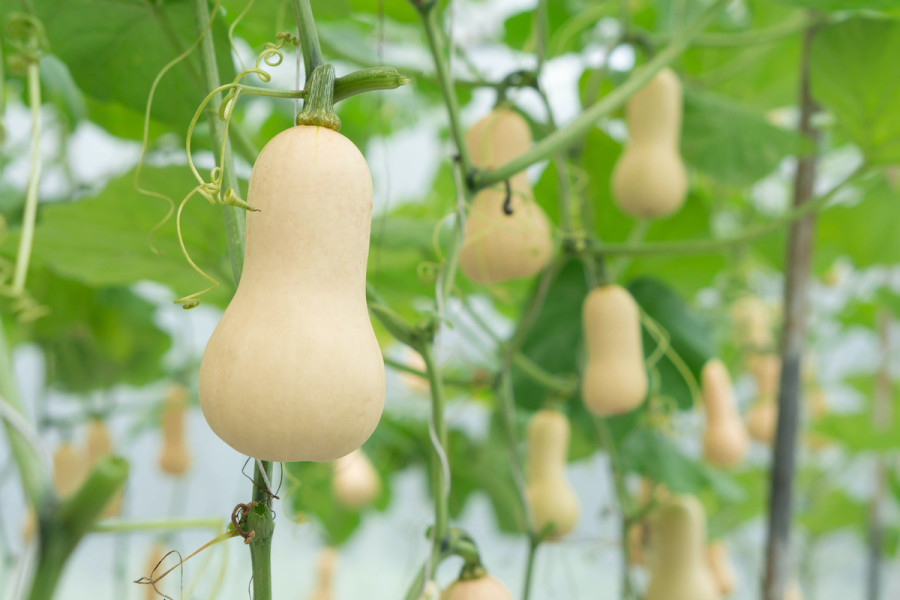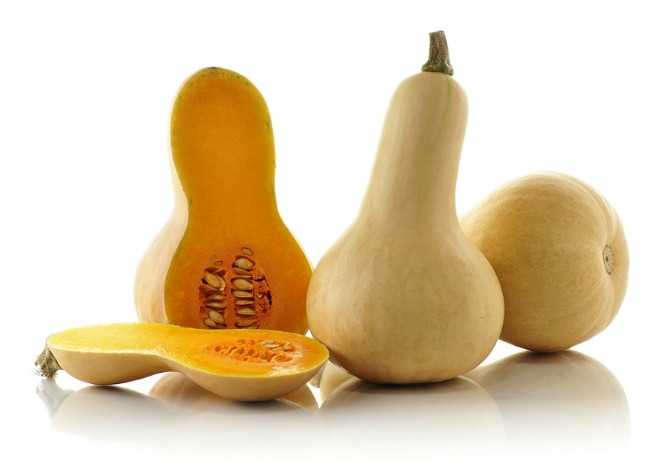Thanks to favourable prices of butternuts in Kenya, many farmers are venturing into butternut farming targeting both the local and global markets.
Usually, most local buyers purchase butternuts at 50 shillings to 100 shillings when market is performing dismally and 20 shillings per kilo when there is glut.
Butternut farming success stories
Duncan Kibet, who has ventured into this business, shares what is easily one of the best butternut farming success stories in Kenya.
Find out how this venture has transformed his life.
Despite the scorching sun, Hortfresh crew finds him busy at his farm in Loboi area, Baringo County; 120 kilometers from Nakuru town.
He is harvesting, sorting and loading butternuts into a lorry with the help of his workers. This particular harvest, is destined for Marikiti market in Nairobi and it is estimated to weigh 6 tons.
Butternut has a pale brown-orange skin and a deep, orange flesh.
The wonderfully moist flesh squash has a sweet, nutty flavor and a slightly fibrous firm texture.
He avers that he ventured into butternut farming after burning his fingers in cultivating tomatoes and watermelons due to their high level of perishability.
“Butternuts are low risk crop unlike tomatoes and watermelons. Once I harvest them, I can store them for a longer period of time while scouting for market or waiting for prices to stabilize.
“We rarely encounter market glut as compared to other crops cultivated. In addition, the expenditure for growing this crop is pocket friendly as compared to other crops,” he stated.
“The first step to growing bountiful butternuts is to choose the variety to grow and proper preparation of the land before actual planting.
“The seeds are sowed directly in the planting holes instead of being raised in the nursery and it takes seven days for the seeds to germinate,” he opined.
RELATED: Butternut Farming: Everything You Need to Know
Before embarking on the actual planting, he had to contract an agronomist who advised him to carry out soil test to determine the nutrient efficiencies.
He gets manure for his crops from his cowshed. His farm is majorly organic but he incorporates both DAP and CAN when planting and top dressing respectively to boost nutrient levels in the plants.
Kibet narrates that for butternuts to grow well, the crop should be well spaced and watered frequently.
“Before you venture into farming; have a plan for cost management, know what amount you will be spending on everything including purchase of seeds, land leasing if you don’t have one, watering expenses, input costs, and labor.
“This gives you an estimate of cost expenditure. Also, have your price estimates and yield estimates and calculate the potential earnings when theirs glut and when there is shortage of the commodity in the market, to be able gain maximum profit,” he explained.

Despite some challenges he encounters on a day-to-day farming basis, he has been able to increase his area of cultivation from half an acre to six acres in two years. This has motivated him more into farming the crop.
Determined to scale up his butternuts production, he has bought a water pump and irrigation pipes which he uses to draw water from a nearby river.
“The river has been very helpful to us as this region is relatively dry,” he said.
Kibet has employed a farm manager who does the daily operations and sources for casuals when demand arises during weeding, planting and harvesting.
His advice to young people; “follow your passion, be committed to your work, as it takes some time to recoup investment back.
“If you are interested in farming and you have a piece of land somewhere, do something on the farm and it will earn you money since people must eat daily.
Benefits of Butternut
Regulates Blood Pressure
The high levels of potassium found in butternuts are able to regulate blood pressure. As a vasodilator, potassium is able to reduce the tension in blood vessels and arteries, thereby lowering risk of heart attack, stroke, atherosclerosis, and other cardiovascular issues.
Eye Care
The orange color in butternuts tells a health-conscious person that there is a lot of vitamin A in the vegetable.
Improves Digestion
As an excellent source of dietary fiber, butternut can help optimize the digestive process and relieve problems like constipation and bloating.
Prevents Birth Defects
High levels of folic acid in butternut help to prevent certain birth defects, such as neural tube issues and spina bifida.
RELATED: How class 8 dropout makes Sh80,000 monthly from farming
Improves Circulation
Butternuts have a high level of iron which is important for everyone’s health, considering that iron is required for the creation of red blood cells.
Improves Bone Density
Butternut is rich in minerals, such as potassium, manganese, magnesium, and calcium, all of which help with the strength and durability of bones.
Prevents Chronic Diseases
Many of the nutrients and organic compounds found in butternut act as antioxidants; which means that they seek out free radicals in different tissues and organs of the body and eliminate them before they can cause healthy cells to mutate and cause oxidative stress carotene.
Boosts Immune System
The significant level of vitamin C found in butternut means that it can be a great boost for immune system and the production of all new cells.
Skin Care
Beta-carotene in butternuts has received a great deal of attention for its potential to block the harmful Cholesterol
Balances Electrolyte
The body needs enough electrolytes found butternuts to regulate the water balance between cells, modulate blood pressure, and stimulate muscle contraction and send nerve impulses.
Uses & Recipes
Butternut is a healthy vegetable that can be used and easily added to diets.
Soup: You need are few ingredients that include butter, potatoes, onions, garlic, pepper, salt, leek, vegetable or chicken broth, carrots etc.
Roasted butternut: Fresh squash cut into pieces, butter, salt and pepper, baking tray and an oven/ microwave. Just place the squash pieces on the baking tray, season with salt and pepper.
Pasta: You can add roasted or cooked butternut squash to any cooked pasta that you like.
Salads: Add cooked/roasted butternut squash, spinach, kale in a bowl. Mix olive oil and lemon juice and pour over the salad mix. Season with salt and pepper.









Wow,how can I join bizna Kenya?it’s interesting